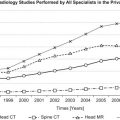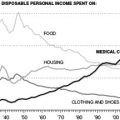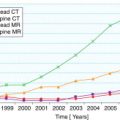A conflict of interest occurs when an outside interest influences professional decisions regarding patient care, education, or research. It is important to recognize conflicts of interest and to report significant financial interests to the appropriate institutional official. When a significant financial interest conflicts with human subjects research, the investigator is typically prohibited from participating in the research. If the conflict does not affect human subjects research, in some instances a conflict of interest management plan can be developed that allows continued participation in the research.
- •
Federal guidelines require that human subjects investigators report all outside activities greater than $5000 in value to their institutional conflict of interest committee.
- •
Conflicts of interest in practice occur when a financial interest may influence clinical decision making.
- •
Educational programs can be compromised by financial conflicts of interest and appropriate disclosure is required before presentations.
Introduction
Patients need to feel confident that the decisions made by the physicians caring for them are not influenced by personal financial interests. Pharmaceutical companies and medical imaging equipment manufacturers are examples of entities that have the potential to influence the decision making of Neuroradiologists. When significant financial involvement with industry occurs, the activity must be disclosed to the Institution’s conflict of interest committee or adminitrative personnel. It is important to note that some interactions with industry can have a positive impact on patient care by accelerating the introduction of new technologies. However, the pervasiveness of these relationships has generated public concern that financial interests may adversely impact clinical managment. Federal agencies, Legal Actions Academic Organizations and Professional Institutes have all brought into focus the potential of financial interest to compromise clinical judgment. The Institute of Medicine report describes a conflict of interest (COI) as a set of circumstances that creates a risk that professional judgment or actions regarding the care of a patient will be unduly influenced by a secondary interest. An individual COI occurs when a person with entrusted responsibility (eg, patient care, education, research) has another interest that may conflict with the proper exercise of that responsibility.
Radiologists have a broad range of experiences in many aspects of health care. These qualities are of value to industry, and neuroradiologists are often invited to participate in clinical advisory groups or provide consultation to industry regarding product development. The presence of outside interests, and the COIs that may result, are not completely avoidable. However, even the perception of COI undermines public trust and patients may become concerned about the safety of new imaging techniques and treatments. It is imperative that physicians address COIs to maintain the public trust, which can be accomplished by reporting all significant financial interests, developing management plans when COIs occur, and disclosing financial conflict to the public. There are many aspects of COI, but this article focuses on financial COIs in human subject research, neuroradiology practice, and education.
Milestones in COI
The Bayh-Dole Act of 1980, also called the Patent and Trademark Amendment and the Stevenson-Wydler Technology Innovation Act, promote university-industrial interactions by allowing researchers and universities to retain ownership of intellectual property resulting from federally funded research and to license the discoveries to industry. This highly successful legislation greatly accelerates the transition of research innovations into commercial products. Relationships between physicians and industry start to proliferate.
The Public Health Service report released in 1995 (PHS; 60 FR 35815, 42 CFR 50) outlines the responsibilities of federal grant applicants regarding financial COI. The goal is to promote objectivity, honesty, and integrity in research. Initial compliance with the regulations is variable and there is no uniform approach across institutions.
A landmark case occurs in 1999, when Jesse Gelsinger dies following a gene transfer experiment. Controversy ensues when it was revealed that the principal investigator and his university had major ownership interests in the company providing the gene transfer product. The concept of financial COI was brought into the public debate. Research institutions aggressively move to establish guidelines for monitoring and managing COI in research.
In 2007 the Association of American Medical Colleges and the Association of American Universities issue a joint report and revised COI guidelines. The report provides a framework for all academic institutions to meet the recommended COI standards, and templates are made available for local COI committees.
In 2009 the Institute of Medicine publishes a comprehensive report on “Conflict of Interest in Medical Research, Education and Practice”. The report is reviewed by congressional committees and recommendations are made to the US PHS and the Department of Health and Human Services (HHS).
PHS and HHS release the “Final Rule” in 2011 and new regulations regarding financial COI are established for research sponsored by the National Institutes of Health (NIH) and other federal agencies.
In 2012, The Patient Protection and Affordable Health Care Act (H.R. 3590), includes the Physician Payment Sunshine Act, which requires pharmaceutical, medical device, biologic, and medical supply manufacturers to report to the HHS any payment or other transfer of value to physicians and teaching hospitals.
COI in human subjects research
Recently, the Public Health Service in collaboration with HHS published in the Federal Register revised financial COI regulations under the heading “Responsibility of Applicants for Promoting Objectivity in Research for which PHS Funding is Sought” (2011PHS/HHS Final Rule). This material supplements the previous regulations published in 1995. The regulations promote standards that ensure that the design, conduct, and reporting of NIH-sponsored research is free of bias from financial COI.
For federally funded research, all investigators must comply with the PHS/HHS guidelines. The 2011PHS/HHS Final Rule clarifies that the term investigator includes the principal investigator and any other person, regardless of title or position, who is responsible for the design, conduct, or reporting of NIH-sponsored research, which includes collaborators and consultants even if they are not receiving salary support from the award. The 2011PHS/HHS Final Rule focuses predominantly on the issue of financial COI. The first requirement is that the research institution establishes an internal system for physicians to annually report all outside activities. The outside activities include financial interests (eg, remuneration, stock, stock options, consulting, royalties), leadership roles in industry (eg, officer in a company or member of the board), or ownership in a company. The outside activities report is typically reviewed by an institutional officer and reports indicating potential conflicts are forwarded to the institution’s local COI committee.
The institutional COI committee is charged with the task of reviewing the outside activities and determining whether a significant financial interest exists. A significant financial interest of the investigator (or of the investigator’s spouse and dependent children) is described in the 2011PHS/HHS Final Rule as arising when, for a publicly traded entity, the value of any remuneration or equity interest (eg, stock or stock options) received from the entity in the 12 months preceding the disclosure exceeds $5000. For non–publicly traded entities, a significant financial interest exists if the value of the remuneration exceeds $5000 or when the investigator holds any equity interest, stock, stock options, patent license fees (if paid directly to the investigator), ownership interest, or leadership position (eg, paid officer of the company). Investigators are also required to disclose sponsored travel expenses (see Box 1 ). The regulations also require that the COI reports are made available to the public, either by posting on a Web site or by providing a mechanism for written requests. The 201PHS/HHS Final Rule reiterates that a financial COI exists when the financial conditions could directly and significantly affect the design, conduct, or reporting of NIH-funded research.
- •
Equity interests, including stock options, of any amount in a non–publicly traded business entity.
- •
Equity interests, including stock options, in a publicly traded business entity that exceeds the 2011PHS/HHS Final Rule threshold of $5000.
- •
Royalty income or the right to receive future royalties under a patent license or copyright that is not managed by the institution.
- •
Any leadership position in a commercial entity with fiduciary responsibility, including senior managers (eg, presidents, vice presidents, members of the board of directors).
- •
Consulting fees, honoraria, gifts, or other compensation from business entities that, in the aggregate, have in the prior calendar year exceeded the de minimis criteria established in PHS 2011 Final Rule financial regulations ($5000).
- •
Exceptions: significant financial interests do not include publicly traded mutual funds; stock in a publicly traded business entity that does not exceed $5000 in value; royalties under a license agreement managed by the institution; and payments that are managed by the institution that are directly related to reasonable costs incurred in the conduct of research as specified in a research agreement. Also excluded are ownership interests in the institution held by the investigator.
Depending on the practice setting and institutional policies, additional restrictions may apply.
Most institutional COI committees use a financial threshold (either as an arbitrarily defined amount or as a percentage of income) to define significant financial interest. Other potential conflicts such as leadership or ownership in a commercial entity are also evaluated. If the financial threshold is exceeded or there is leadership/ownership in the entity and a nexus is present between the proposed research and the financial interest, the physician is not allowed to proceed with the research. If the financial threshold is exceeded or there is leadership/ownership in the entity but there is no nexus with the proposed research, the investigator may be allowed to proceed with the research with a management plan approved by the institutional COI committee. There is some variability across institutions in the financial threshold that requires management, with reported thresholds ranging from $5000 to $10,000. The relevant information from the internal COI committee review is then disclosed to the funding agency (eg, NIH). The major elements of the process are summarized in Fig. 1 .









